When we play a game we agree to abide by certain rules, entering a special ‘space’ with the other players, called the Magic Circle. The idea of the Magic Circle was originally popularized by Katie Salen and Eric Zimmerman in Rules of Play, and it is a powerful metaphor for designers.
If you’re not familiar with the idea, there are many podcasts and articles available that are well worth your time.
Entering the Circle
The Magic Circle concept extends beyond tabletop games. It also applies to other activities like sports and religion. One thing these do well is create clear transitions for when you move into and out of the magic circle, starting or ending your ‘game time’.
In Judaism, the donning of a prayer shawl (tallis) or tefillin (leather straps and boxes containing prayer scrolls) delineate the transition from normal life into a sacred space. Many religions have rituals around purity, which define how people move between different states after, for example, handling a dead body.
Sporting events in the United States start with the national anthem and, in the case of football, a coin flip. There is no game-related reason for this. But through repetition, fans and players become conditioned that this marks the start of the game. The Star Spangled Banner is a ritual moment that cues people that we are moving into the magic circle.
Sometimes these pregame rituals can even extend into meta-game territory. In the 1970’s my home-town hockey teams the NY Rangers and Islanders would often tangle with the Philadelphia Flyers in the playoffs. At the start of the most important games in Philly the Flyers would bring in Kate Smith to sing God Bless America - a good luck charm so potent that they later erected a statue in her honor. The NY fans, myself included, quivered in fear when Kate Smith came out. In 1975 the Flyers and Islanders were playing in a game 7 playoff match and - I remember this vividly from my childhood - Kate Smith was brought in to sing before the game. The Islanders captain skated to her after the song and presented her with a bouquet of flowers to try to counteract her influence. Sadly they still lost.
The Flyers were an incredible 100-29-5 (win/loss/tie) when Kate Smith sang before the game.
Enough about Kate Smith - you get the idea.
The Rituals of Tabletop Games
In my opinion, board games (and video games) generally do a very poor job of creating these entry rituals into the game space.
If these rituals exist at all, they are usually spontaneously created by the group, and become a form of an inside joke.
For example, my kids and I used to play a ton of the app game Space Team (which you should totally play if you’ve never played it before).
It’s a cooperative group game, and at the start it shows this screen:
It is now a family tradition that when we play, we all read this out loud together - and shout out “AS A SPACE TEAM!”
This completely energizes us, and transports us into the game space.
I know a lot of groups that have this type of ‘home grown ritual’ for certain games. Some have things they say at the start, like we do with Space Team. Others have action figures that they always bring out when a certain game is played. And many others. I’m guessing that if you play with the same group regularly, you have your own.
But these are not designed into the game. They are traditions built over time.
Clothing as Ritual
The most common type of designed-in game ritual I am aware of is the ‘dress up’ ritual. Some games have you wear something. If you play the same game repeatedly, the act of donning these items gains a ritual characteristic.
For example, in the game Lift It, you put a headband on with a hook that you use to pick up items on the table.
In Coyote you place a headband on your head, and you put a card there so your opponents can see it, but not you.
And in Crazy Bugs your headbands have magnets hanging off that you use to grab marbles.
Strictly speaking these are not ritual objects, because they serve a functional purpose within the game.
However, having played some of these, I can safely say that the act of putting something silly onto your head does prime you into entering the ‘game state’, and interacting with the game on its level.
A similar item is the Mister X visor in Scotland Yard. In this one-vs-many game, Mister X is trying to evade capture for a certain number of turns. The game includes a special visor for Mister X to wear.
This visor is nominally functional - it theoretically prevents the chasers from seeing where Mister X is looking on the board.
But honestly, it’s just fun to wear, and putting on the visor goes a long way to making that player feel crafty and mysterious.
Some games recommend external items. The card game The Great Dalmuti has players sit in order of rank, and each round they move seats as their rank changes. The rules actually suggest that players get hats or other articles of clothing of varying quality to indicate their status, and pass those around between rounds. I know groups that have had dedicated Dalmuti hats for decades.
When designing Space Cadets we originally planned to include badges for each player based on their role (an idea I stole from the RPG Paranoia). There was no purpose to them - it was clear which player was which officer by the mats in front of them - but we thought it would help get players into the right mindset.
Unfortunately due to space limitations we couldn’t include them. However, without prompting, several people posted printable badges to BGG! I loved that, although it did make me regret not being able to include them that much more.
Sound as Ritual
Another type of ritual to get players into the magic circle is sound and, occasionally, video. This is almost exclusively used for games that have an audio element of play. They often start with the same repetitive phrase every game. This creates a consistent cue for players to switch into ‘game mode’.
For example, in the real-time game Space Alert, a mission soundtrack controls the flow of the game. Every soundtrack starts with the same ‘alert’ noise, and then a robotic voice saying “Alert: Enemy Activity Detected”.
After playing several missions, players use this ritual as a way to get focused for the upcoming chaos. A similar ritual surrounds the voice in Omega Virus. It always starts with the same instructions to the player, and initial taunting “15 minutes until I take over!”
NOTE: In the above video the players put their hands into the center and do a ‘break’ before the game starts. This is a great example of a home-grown organic ritual.
VCR games from years past, like Nightmare, also use this repetition to good effect, getting the players into the mood of the game.
Some games come with a soundtrack CD and encourage it to be played with each game. The music and game become intertwined in the players’ minds.
Action Rituals
Another type of ritual has players perform specific actions at the start of the game.
In one sense, setup, if it is consistent, can become such a ritual. For example, dealing out the hands in a game of Hearts creates a defined space for players to settle down and get ‘into’ the game.
Cute first-player rules can also fulfill this role, although obviously they are functional, and are not really set up to do this.
Activities that are exclusively for a ritual purpose are very rare. I am aware of only one game that does this: The Mind.
The Mind is a cooperative game where players are trying to place cards in the center of the table in ascending order. Here’s a snippet from the start of the rules:
In case you can’t read the image:
Concentration please: each player who is ready to face the current level, places one hand, palm down on the table. Once everyone is ready, they remove their hands from the table and the game begins. Note: this collective concentration on the level is enormously important for successful survival! As the game proceeds, players are permitted to refocus their concentration at any time. Simply say “stop” to interrupt playing –everyone places a hand on the table – refocus – remove hands – and the game goes on!
I have bolded the “Note” sentence above. This is really curious. This “collective concentration” is not really “enormously important”. Yes, placing your hands in the center of the table makes sure that everyone is ready to start placing cards. But there are a ton of simpler ways to do that then placing hands in the center and focusing your energy.
And yet, we always do it. Because it’s in the rules.
But also because it does add to the experience. Taking that breath together as a team helps transition us into the Magic Circle of non-verbal communication.
It’s also a brilliant piece of game design.
Conclusion
Adding starting rituals to games as a specifically designed method to get players into the right mindset and create a sacred space is a woefully underutilized tool for designers.
Think about this for your current designs. What could you do to ease players into your world? Can you extend your first-player selection process into something that is more of a ritual? Is there another activity, sound, or wearable that you can leverage?
I am sure that I am missing other examples of rituals in board games. Please share your examples in the comments!

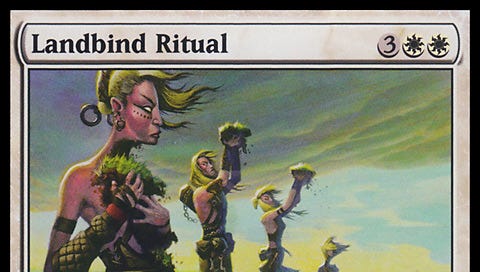




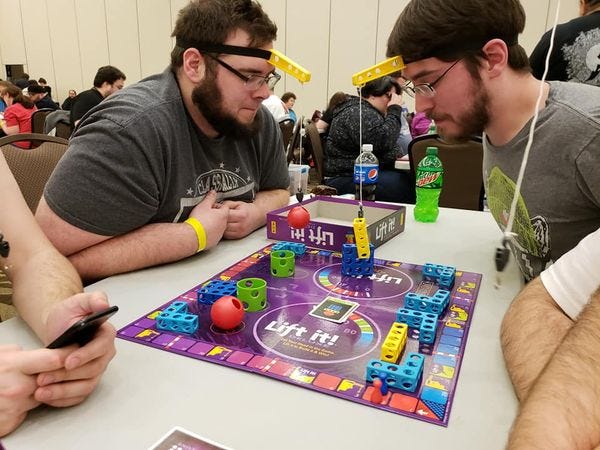
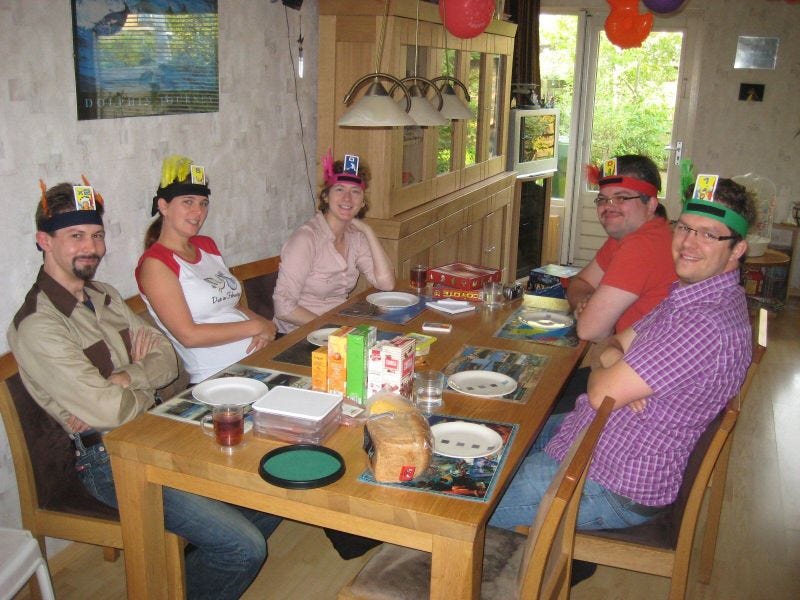
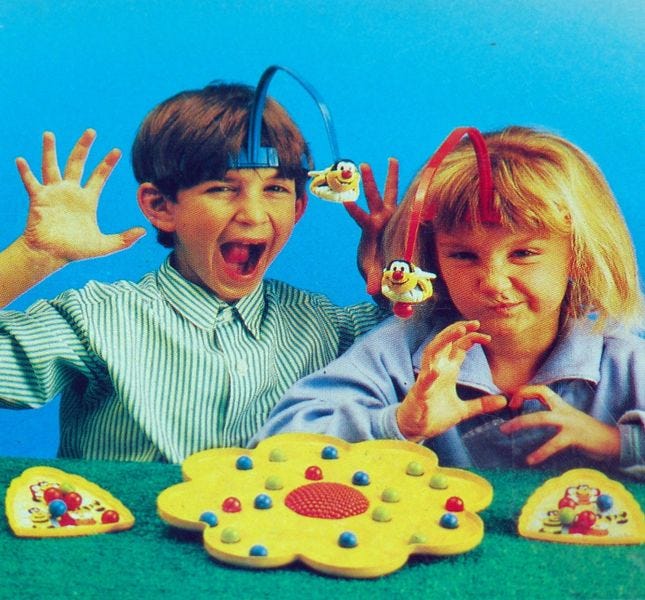
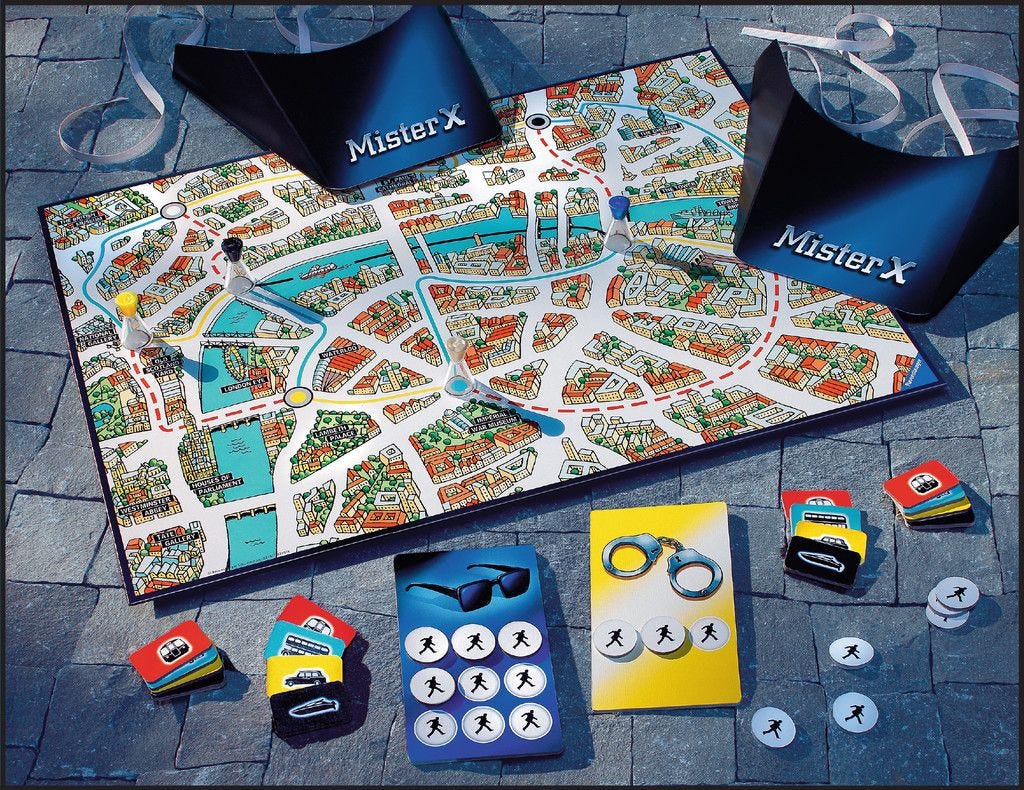
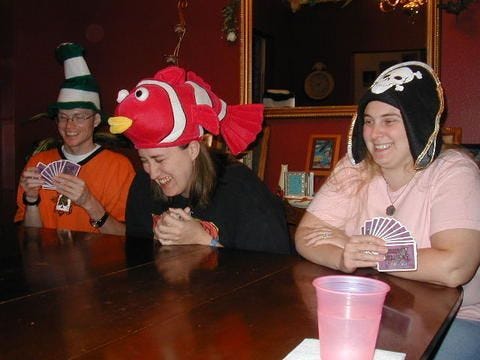

Wonderful article! I think you definitely see more ritual at competitive events. At Magic tournaments there's definitely a setup ritual of placing down a play mat, shuffling the deck, allowing opponent to cut. (Some card games also have a traditional shuffle-and-cut that feels quite ritualized, at least in certain groups.) Chess tournaments involve looking up the pairing of the next game, and for games where white/black isn't predetermined, one player taking a pawn of each color in each hand and the other player choosing a hand. A lot of professional athletes have their own superstitions and personal rituals to give them good luck, that drives their pre-game behavior.
But yeah, game designers can lean much more into this. As soon as I saw the title of the article I immediately thought of The Mind and how brilliant that hands thing is, and was not disappointed to see that mentioned at the end. Certainly any games with a theme of rituals or cults (lookin' at every Lovecraft/Elder Horror-themed game EVER) should do more with this than they do.
Also thinking of this in the context of video games. Most games do have a clear delineation of the Magic Circle in the form of things like loading screens, but more games could certainly use that loading time to provide a display that puts the player in a different frame of mind... hmm.
I've long suspected that it's the 'sleep' stage ritual at the start of hidden role games like Secret Hitler and the various versions of Werewolf that are a key part of those games' appeal.